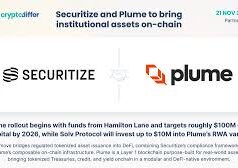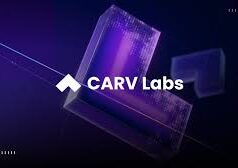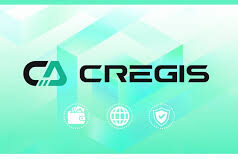Ethereum, the blockchain that brought us smart contracts, decentralized finance (DeFi), and non-fungible tokens (NFTs), is turning ten and looking forward with bold ambition. On its decade milestone, the Ethereum Foundation’s senior researcher Justin Drake shared a transformative vision called “Lean Ethereum,” a roadmap to scale the network’s capacity, ensure its resilience, and solidify its role as the backbone of the decentralized internet. This vision isn’t just about technical upgrades—it’s about crafting a blockchain that’s minimal, modular, and ready to handle the demands of a global, digital economy. Let’s dive into what “Lean Ethereum” means, why it’s a game-changer, and how it plans to shape the next ten years.
A Bold Blueprint for Scalability
Ethereum has always been a pioneer, but it’s faced its share of growing pains—high gas fees, network congestion, and scalability bottlenecks have been persistent challenges. The “Lean Ethereum” vision, outlined by Drake, tackles these head-on with an audacious goal: scaling Ethereum to handle one billion gas per second and 10,000 transactions per second (TPS) on its base layer, and an astonishing one trillion gas per second and one million TPS across its Layer 2 networks. For context, Ethereum currently processes around 15–30 TPS on its base layer, with a gas limit of about 45 million per block. This leap would be like going from a single-lane road to a multi-lane superhighway.
The secret sauce? A focus on Layer 2 solutions like rollups, which process transactions off-chain and post only summary data to Ethereum’s mainnet, preserving security while boosting speed. The recently completed Dencun upgrade (March 2024) introduced proto-danksharding (EIP-4844), laying the groundwork for this scalability push by improving data availability for rollups. The upcoming Pectra upgrade, slated for early 2025, will further refine this with Verkle Trees for efficient data storage and enhancements to the Ethereum Virtual Machine (EVM) for smoother smart contract execution. These upgrades aren’t just incremental—they’re steps toward a blockchain that can support millions of users without compromising its decentralized ethos.
Resilience: The Bedrock of the Internet of Value
Drake’s vision isn’t just about speed; it’s about survival. He envisions Ethereum as the “bedrock of the internet of value,” capable of securing hundreds of trillions of dollars over decades, even centuries. This means building a network that’s not just fast but unbreakable, with 100% uptime and resistance to threats like quantum computing and state-level censorship. “If the internet is up, Ethereum is up,” Drake wrote, emphasizing a system designed to withstand anything.
This focus on resilience comes from lessons learned. The 2016 DAO hack, where a smart contract vulnerability led to the loss of 3.6 million ETH, showed Ethereum’s vulnerability but also its adaptability. The controversial hard fork that followed birthed Ethereum Classic but allowed Ethereum to recover and thrive. Since then, the 2022 Merge slashed energy consumption by over 99.95% by transitioning to proof-of-stake, proving Ethereum’s ability to evolve. The “Lean Ethereum” vision builds on this, prioritizing formal verification, provable security, and post-quantum cryptography to future-proof the network.
The Aesthetic of Minimalism
What sets “Lean Ethereum” apart is its philosophy. Drake describes it as an aesthetic of “minimalism, modularity, and encapsulated complexity.” Think of it like a perfectly crafted sushi roll—simple on the surface, but every layer is meticulously designed. This approach emphasizes clean, modular code and provable optimality, reducing bloat while maximizing efficiency. It’s not just tech jargon; it’s a commitment to making Ethereum easier for developers to build on and users to interact with.
This minimalism extends to user experience. High gas fees and slow confirmation times have long been barriers to mainstream adoption. But as Vitalik Buterin noted at TOKEN2049 in Singapore, Ethereum has made strides in reducing fees, speeding up transactions, and improving on-chain applications. The “Lean Ethereum” vision doubles down on this, aiming for seamless cross-layer interoperability so moving assets between Layer 1 and Layer 2 feels as easy as sending ETH between wallets.
Navigating the Scalability Trilemma
Ethereum’s upgrades are a balancing act, tackling the infamous scalability trilemma: how to achieve scalability, security, and decentralization without sacrificing one for the others. Centralizing the network would be an easy fix, but it’s a non-starter for Ethereum’s community, which values decentralization above all. Instead, the “Lean Ethereum” vision leans on Layer 2 rollups and innovations like full danksharding (expected post-2025) to scale without bloating nodes, ensuring anyone with modest hardware can still run one. More nodes mean more security, keeping Ethereum true to its roots.
The Surge, the current phase of Ethereum’s roadmap, is central to this. It aims to push TPS to over 100,000 through rollup expansion and data availability improvements. Future phases like The Verge and The Purge will streamline node operations and prune historical data, making the network leaner without losing its robustness.
The Path Forward
So, what’s on the horizon? The Pectra upgrade in early 2025 will bring immediate improvements, like social recovery for wallets and better smart contract tools. Beyond that, Ethereum’s roadmap includes multidimensional gas pricing, native rollup integration, and advanced consensus mechanisms to keep the network secure and efficient. These changes will empower developers to build more innovative decentralized applications (dApps), from DeFi platforms to tokenized real-world assets, which BlackRock CEO Larry Fink sees as the future of finance.
But challenges remain. Rapid scaling could introduce vulnerabilities in Layer 2 solutions or cause temporary disruptions. Gas fees, while lower, can still spike during network congestion. And competition from blockchains like Solana, which boasts lower costs and faster speeds, keeps the pressure on. Yet Ethereum’s edge lies in its ecosystem—its developer community, institutional adoption, and unmatched decentralization. With $9 billion in net inflows to ETH ETFs and growing corporate interest, Ethereum is poised for an “institutional arc” similar to Bitcoin’s from 2019 to 2024.
A Vision Worth Building
“Lean Ethereum” isn’t just a technical roadmap; it’s a statement of intent. It’s Ethereum saying it’s here to stay, ready to power the next wave of decentralized innovation. From tokenizing financial assets to enabling global, permissionless finance, Ethereum’s vision is about creating a platform that’s fast, secure, and accessible to all. As Drake puts it, it’s an art form—a craft honed over a decade of trials, hacks, and triumphs.
For users, this means cheaper, faster transactions and a smoother experience. For developers, it’s a canvas for building the future. And for the world, it’s a chance to redefine how value moves in a digital age. Ethereum’s first ten years were about proving the concept; the next ten will be about scaling it to billions. With “Lean Ethereum,” the world computer is just getting started.




























Justin Drake’s out here future-proofing the blockchain!
Okay, I’m intrigued but kinda confused. What’s this “Fortress Mode”
how are they gonna pull this off without messing up decentralization?
Why’s quantum computing such a big deal for Ethereum? And what’s with the smartphone verification idea?
Focusing on minimalism and post-quantum security is super smart,
Ethereum’s been killing it for 10 years, and now this Lean Ethereum plan?
Quantum-resistant crypto and 10k TPS? That’s wild!